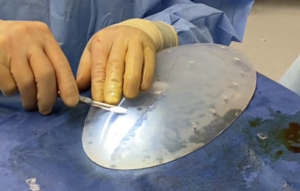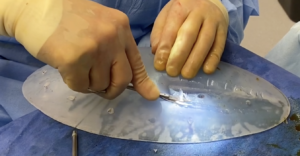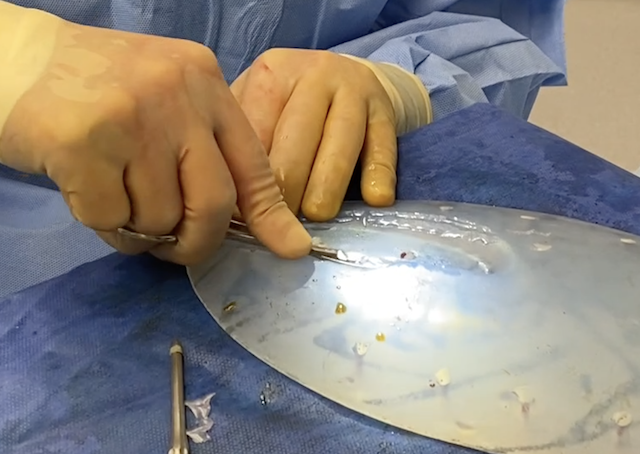Augmentation of various muscular body areas is done with solid but soft silicone implants. The most common body areas that have been aesthetically enhanced are the pectoral, bicep, tricep, and calf muscles. Such enhancements have now extended to include the trapezius and thigh muscles as well. To no surprise the vast majority of patients receiving such implants are men.
Body muscle implants for all of these areas come in a variety of shapes and sizes. The preoperative selection for a specific muscle implant is based on preoperative measurements and/or the use of implant sizers. But there never is an assured way to determine exactly what the implant will look like when it is placed inside the implant pocket. Does it achieve the desired effect? is it too big or too small? Is there any visible implant edging?


It is always a goal to never have to modify a preformed body implant. But the need does arise in some cases particularly in revisional implant surgeries as well as in custom body implant cases. The key in doing so is to create a smooth implant surface and edges that is reasonably symmetric. Scissor modification is the most effective method to do so.
Dr. Barry Eppley
Indianapolis, Indiana



